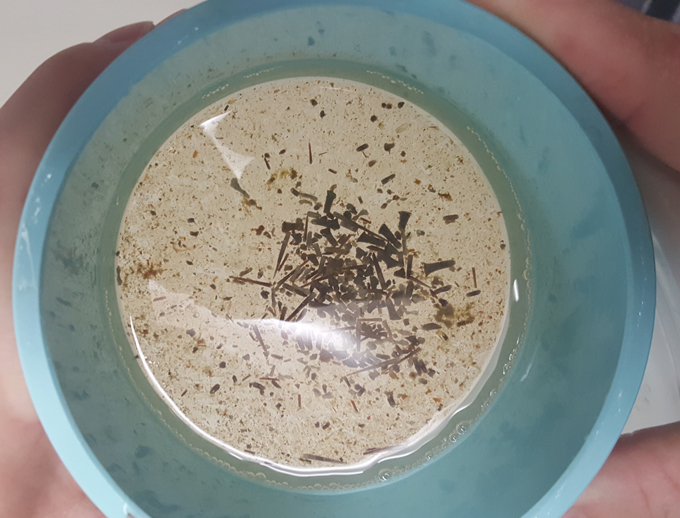Adorned with spikes and toxins, crown-of-thorns starfish aren’t an easy meal. In fact, it’s long been thought that few animals could eat them. But an analysis of fish poop and stomach contents from dozens of Great Barrier Reef species reveals a surprising number of fish able to gulp down these prickly prey, researchers report May 18 in Scientific Reports.
That’s good news for coral reefs. Crown-of-thorns starfish (Acanthaster cf. solaris) have an appetite for living coral polyps. As they crawl over the reef, the starfish liquefy polyps with digestive enzymes, sponging up the nutrients and leaving behind a coral skeleton. Since 1962, periodic starfish population booms on the Great Barrier Reef have caused widespread coral death. By identifying which fish species can stomach a thorny diet, the new study reveals a possible way to suppress crown-of-thorns outbreaks.
Until now, the crown-of-thorns’ list of known natural predators was very short. Giant tritons (Charonia tritonis) — huge sea snails — were documented starfish slayers, injecting crown-of-thorns with venomous saliva and sanding down their spiny exterior with a rasping tongue. And while dozens of reef fish had been observed eating crown-of-thorns, most of these starfish were injured or dead.
Yet occasional starfish population booms suggest something is normally eating live, healthy crown-of-thorns and keeping their numbers in check. So to find the mystery predators, Frederieke Kroon, a biologist at the Australian Institute of Marine Science (AIMS) in Townsville, looked to the guts and feces of reef fish for answers.
“A colleague of mine at AIMS had developed the genetic marker for this crown-of-thorns species,” Kroons says, “which made me think to apply it to [fish’s] poo to identify crown-of-thorns DNA and thus potential crown-of-thorns predators.”
Over three expeditions in 2018 and 2019, Kroon and her team used nets to collect reef fish from Great Barrier Reef locations with varying degrees of ongoing crown-of-thorns outbreak. After rinsing the fish off and isolating them overnight (to prevent cross-contamination with starfish DNA in the seawater), the researchers collected the feces left behind in the fishes’ holding containers. The team also dissected gut contents from other fish collected by spearfishing. In all, the team tested nearly 700 individual fish from 101 different species.

Genetic analysis of the poop and gut contents revealed crown-of-thorns DNA in 30 of the fish, representing at least 18 different fish species. Nine of these — like painted sweetlips (Diagramma pictum labiosum) and purple rockcod (Epinephelus cyanopodus) — had never before been identified as crown-of-thorns predators, the team reports.
“Just the fact that we found DNA of crown-of-thorns in fish poo to begin with was surprising to me! I thought we were looking for a needle in a haystack,” says Kroon. The findings suggest a greater diversity of fish may be eating the starfish than previously thought.
Kristen Dahl, a marine ecologist at the University of Florida in Gainesville, says she’s surprised even more fish didn’t turn up as starfish predators, given the breadth of species Kroon’s team sampled. Some fish may be eating only the crown-of-thorns’ tiny, squishy larvae. Compared with tough chunks of tissue torn from adult starfish, very little genetic material from these easier-to-digest tidbits would probably make it through a fish’s gut.
“Perhaps if more of these reef fish are feeding on early life stages, the DNA degradation would be quicker or more complete,” says Dahl, “leading to reduced ability to detect predation” in poop samples.
Delving into the diets of reef fishes can help scientists better understand how species interact and how nutrients flow through coral reef food webs, says Jordan Casey, a marine biologist at École Pratique des Hautes Études in Perpignan, France. “This is an especially important puzzle to solve nowadays, under the growing impacts of climate change,” she adds, which threatens reefs worldwide.
Understanding ecological relationships has unveiled other useful allies in the effort to preserve reefs, like algae that protect corals from hungry starfish (SN: 8/28/15). Likewise, figuring out who’s eating whom may be key to dampening future crown-of-thorns outbreaks. Current methods to control outbreaks involve killing individual starfish, says Kroon. Her team’s findings could inspire new approaches, such as providing refuges and fishing protections for species that can control these spiny reef-eaters.
"fish" - Google News
June 08, 2020 at 05:00PM
https://ift.tt/3h1u3Ep
Fish poop exposes what eats the destructive crown-of-thorns starfish - Science News
"fish" - Google News
https://ift.tt/35JkYuc
https://ift.tt/3feFffJ
Bagikan Berita Ini
















0 Response to "Fish poop exposes what eats the destructive crown-of-thorns starfish - Science News"
Post a Comment